Phonies & Palindromes
This page is dedicated information about phonies and palindromes, in terms of anatomy and behavior.
Triplostoma katharsis / Uligohippus multiplex*
Also, see Breeds to take a gander at the subspecies of this animal!
Overview
Phonies and Palindromes are the main players of this ARPG! They're crafty creatures of medium size who are found all over the world and have some of the most complex minds found on Confibula. Originally thought to be two different species, science has found that Phonies and Palindromes are in fact the same species, just an incredibly variable one. Palindromes have existed for a long time while Phonies are relatively recent in the fossil record. An intriguing case indeed...

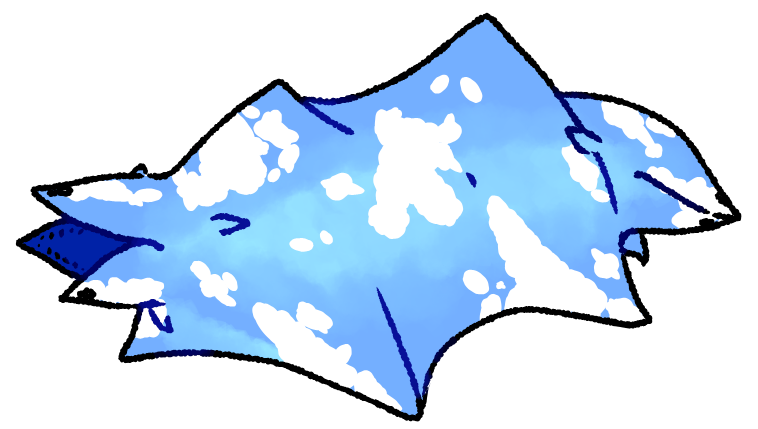
Range
T. katharsis is a cosmopolitan species found in every niche and environment on Confibula. Many make long migrations each year but some stay in the same location for their lives.
What's the Difference?
Phonies are just Palindromes with a bunch of very specific mutations activated. These include: A unidirectional mutation, a mutation which causes gravity to modify the symmetry of the organism, a mutation which enlarges the eyes, a mutation which shrinks the mouth and a mutation which causes the loose skin on a palindrome to never become solid. In the ARPG, you know these mutations as Palindromic, Tri-Symmetry, Eyespots, Gulper Mouth and Ray Wings.
A palindrome's genotype in respect to these mutations is pl, ts, es, gu, RW while a phony's is PL, TS, ES, GU, rw.
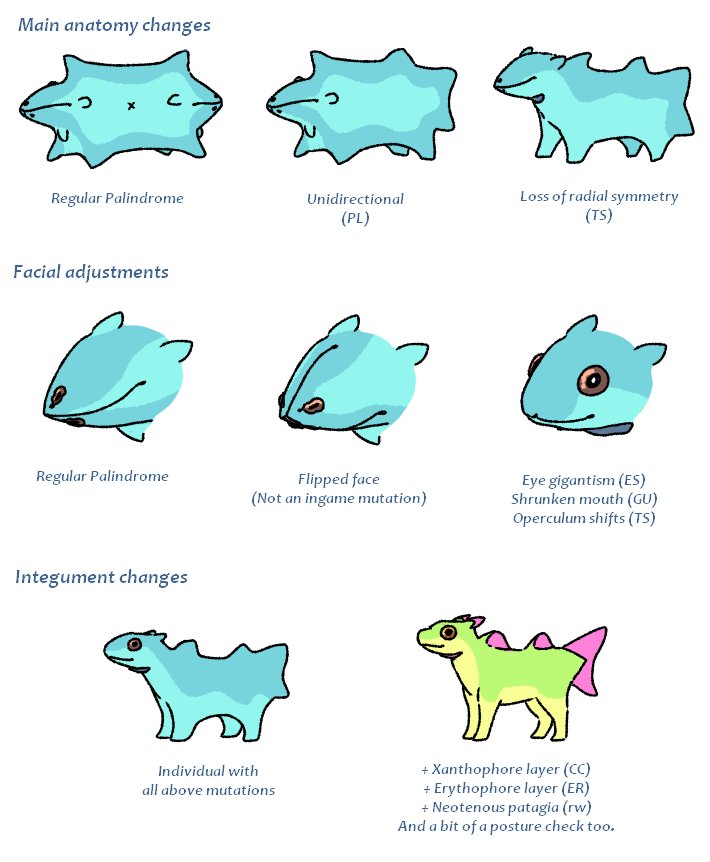
Phonies and palindromes look similar as hatchlings. The only differences evident at birth are the lack of the back head and the flipped front head, as well as color. As they grow, palindromes leave behind their clear skin while phonies retain it. Palindrome mouths grow with their bodies while their eyes don't, while phony eyes and mouths do the opposite. Phonies are guaranteed to get the "maximum" version of top-leg atrophy, while it's only a maybe for palindromes.
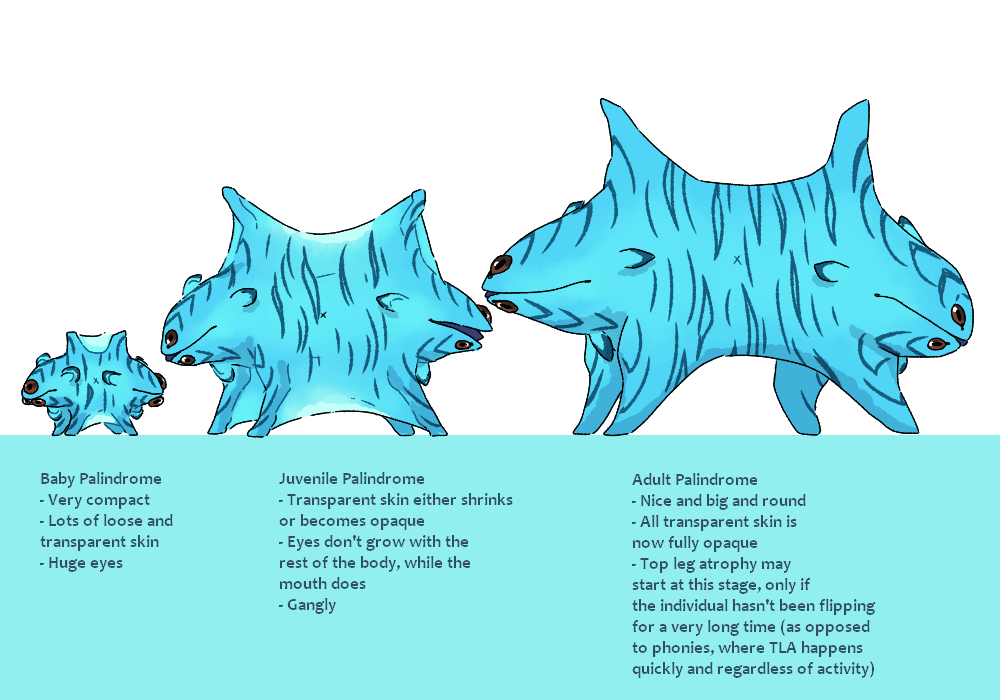
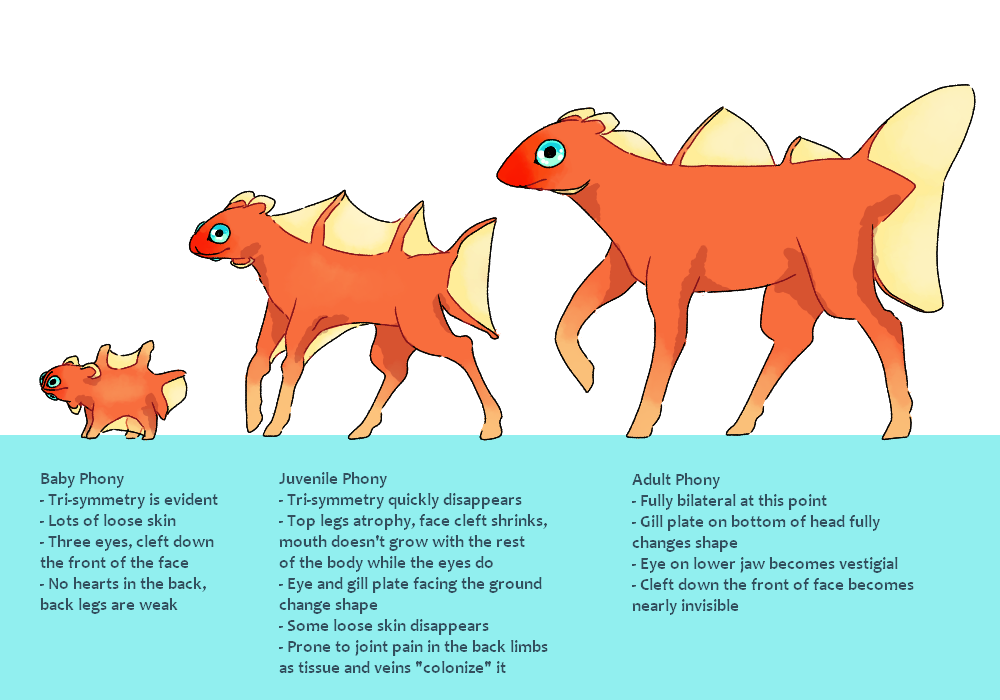
Anatomy
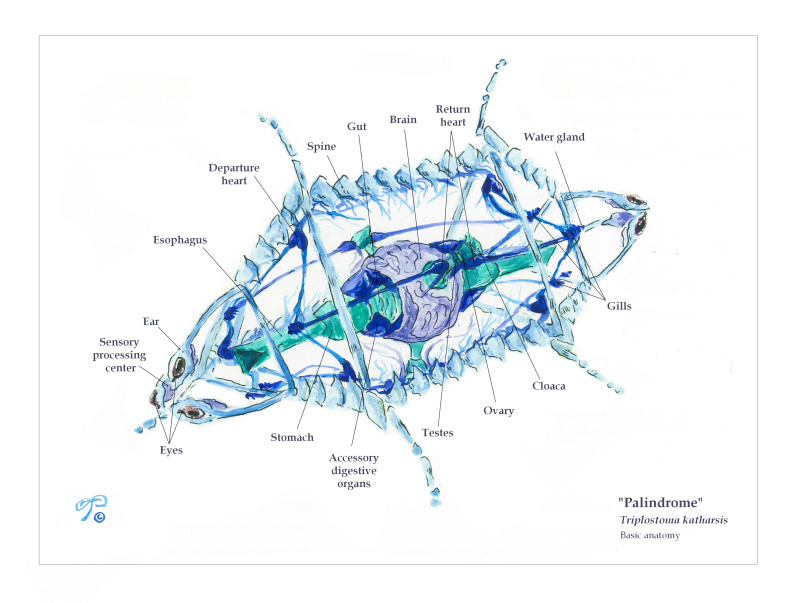
Palindromes, like most other confibulans, are trilaterally and biradially symmetrical. They have a head on each end, and no distinct top or bottom. Although they have two heads, they only have one brain in the center of their body, and phonies are the same. Palindromes have three exiting digestive tracts which emerge from the center of the body onto each side. In the case of phonies, these tracts fuse into a single hole on their posterior end like a normal earthly animal.
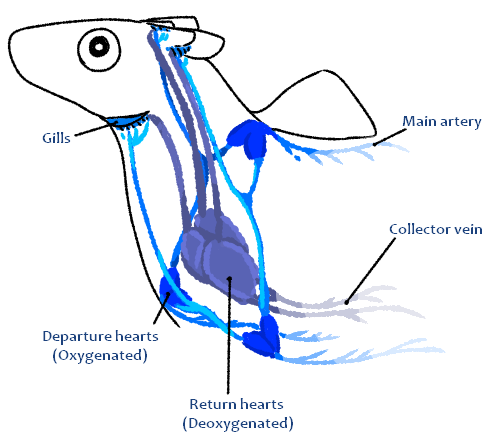
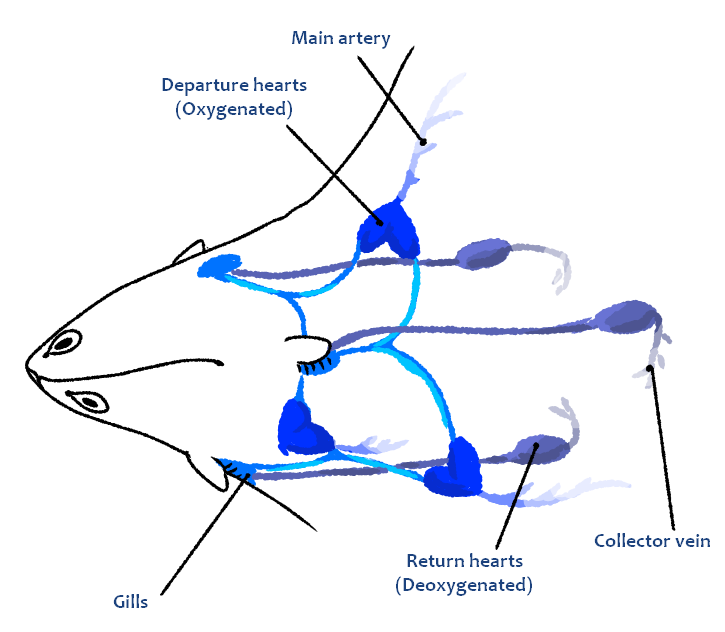
T. katharsis, like most other Confibulan fauna, use hemocyanin in their blood. They have a poor oxygen affinity, but their world has a low oxygen content anyways so it ended up being the most efficient oxygen transport pigment. Their innards, thus, are blue. They have no blood cells, but their pigment is suspended in their blood. Phonies have six hearts, while Palindromes have twelve. Each heart is two-chambered and handles one type of blood, unlike humans whose hearts have four chambers and handle both oxygenated and deoxygenated blood. These guys have two types of hearts designated for collecting deoxygenated blood and sending it to the gills, and then taking reoxygenated blood from the gills to the rest of the body.
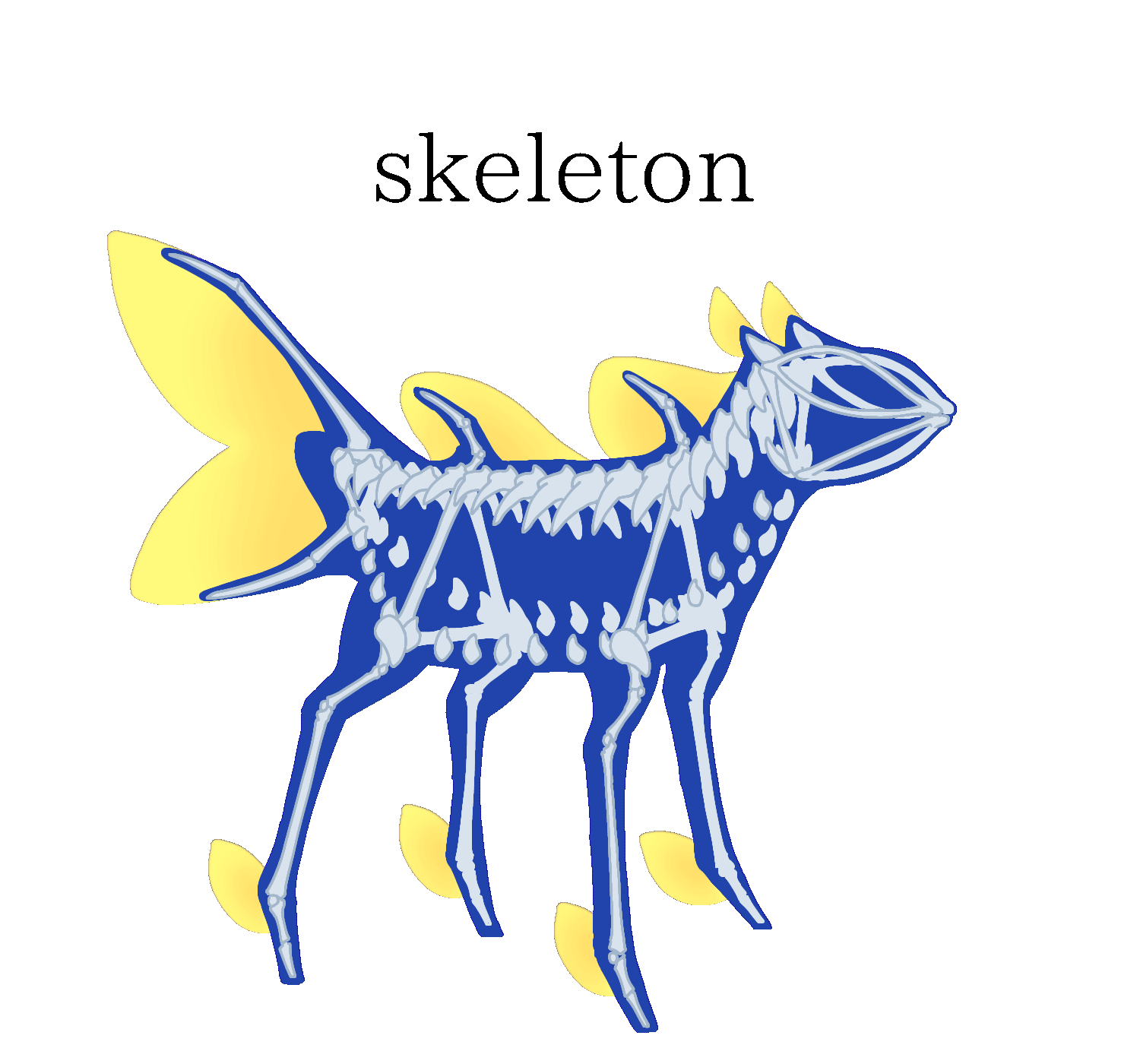
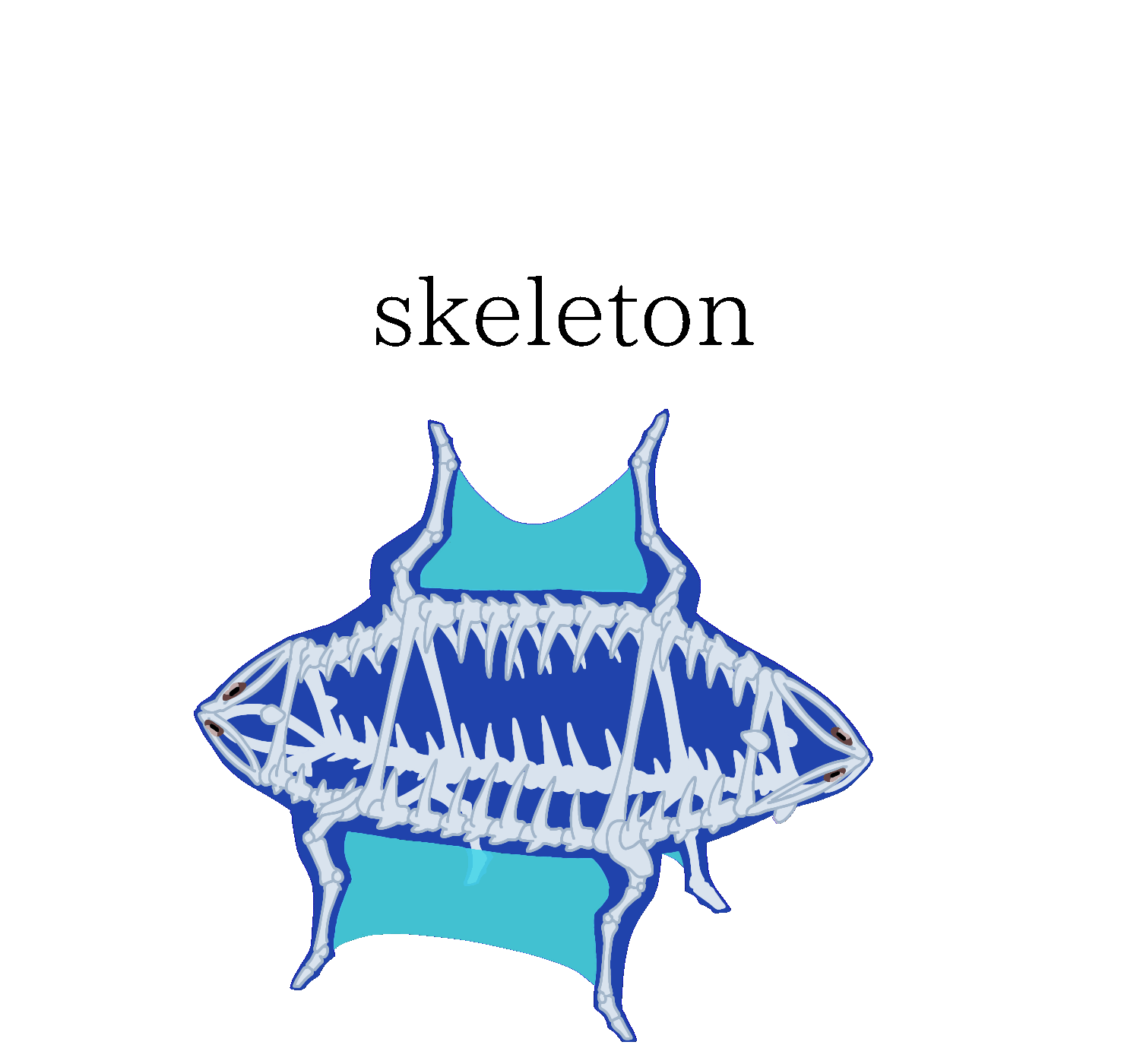
Phonies and palindromes have organs cushioned by muscles similar to earthly ones, as well as a nearly transparent mesogleal "goop". If you were to cut one open, you'd get a mix of musculature saturated by blue blood as well as clear jelly.
Their bones are made of durable hairlike fibres encrusted with tiny silica crystals that lock together into a solid shape. Their bones can even be unraveled! Although the two variants look quite different, their skeletons are rather similar.
Reproduction
T. katharsis can reproduce sexually or asexually thanks to their sexual selection system. Each individual has three exiting digestive tracts, and each of these tracts can have up to two gonads attached to it. Each tract doesn't even need to match! As a result, an individual can have a wide variety of combinations making up their sex. Because most are a mix of male and female, it's not uncommon for these guys to clone themselves.
[insert image - reproduction but like... not in a nasty way]
Upon sexual maturity, brightly colored patches appear on the insides of their mouths which correspond to the gonads which that side of the body has, and that's the only piece of dimorphism which the species possesses. Most of the time, two partners will perform an elaborate mating dance and the two will mate twice. Most are born in pairs but the eggs, which are soft and fragile, don’t always both make it to hatching. Some phonies mind a nest in the water, while others will simply drop them in a moist spot and get on with their lives.

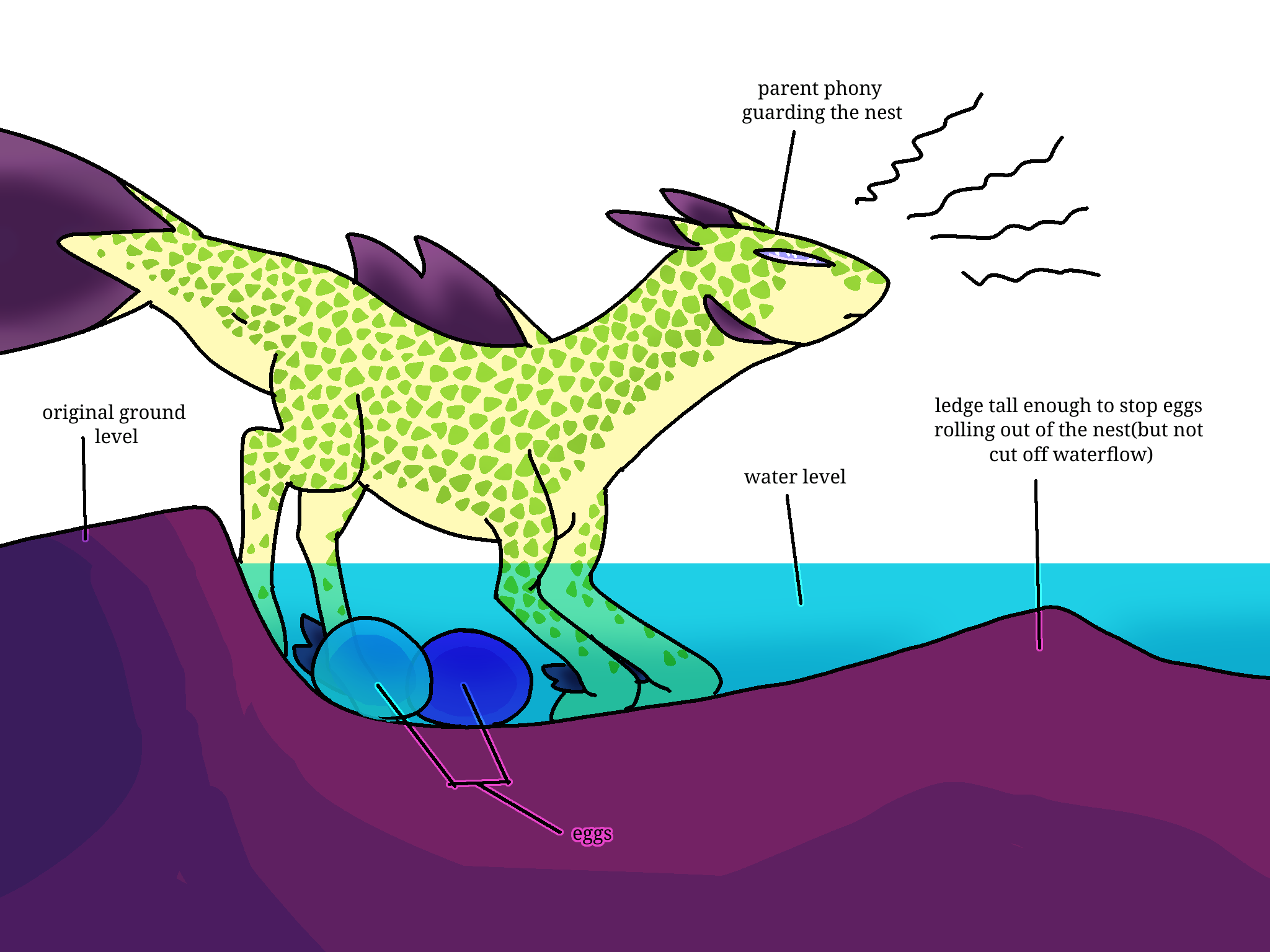
The eggs may also fuse together, which often results in individuals with strange duplicant mutations.
Diet
T. katharsis are omnivorous creatures which will eat anything they can get into their mouth. They will hunt for food or scavenge for carcasses, they will graze for low-growing autotrophs or browse for high-growing ones, and they will often steal from other members of theirs or another species for their keep. They are also known to cannibalize. Typically, palindromes are more inclined to scavenge while phonies hunt more often.
[insert image - diet]
Phenotypics
Behavior
T. katharsis are highly intelligent animals and are very social. They often form groups called schools or bands (schools for phonies, bands for palindromes) which can grow quite large and may be for a variety of relationship types from familial to platonic to romantic. Usually, smaller individuals will live in large family-based groups and larger individuals will live in smaller groups of unrelated members. They also have a simple currency system based on pebbles. The species readily partakes in geophagy for a variety of uses. Stones may be used as gizzard stones to crush food, as tools held in the mouth or crushed into powder to be eaten. In addition to this, stones are traded around for help locating food, mating rights, territory, in exchange for interesting objects and more.
[insert image - behavior - schools and pebbles]
As geophages, these animals may be tempted to consume the bones of the dead to repair their own, but they also use bones for other purposes. Since the bones can be unraveled, they can also be woven into textiles and worn. As a result, one may find phonies and palindromes wandering the wilds wearing the equivalent of fiberglass clothing. Phonies and small palindromes tend to have more elaborate outfits while large palindromes have a more simple style of dress.
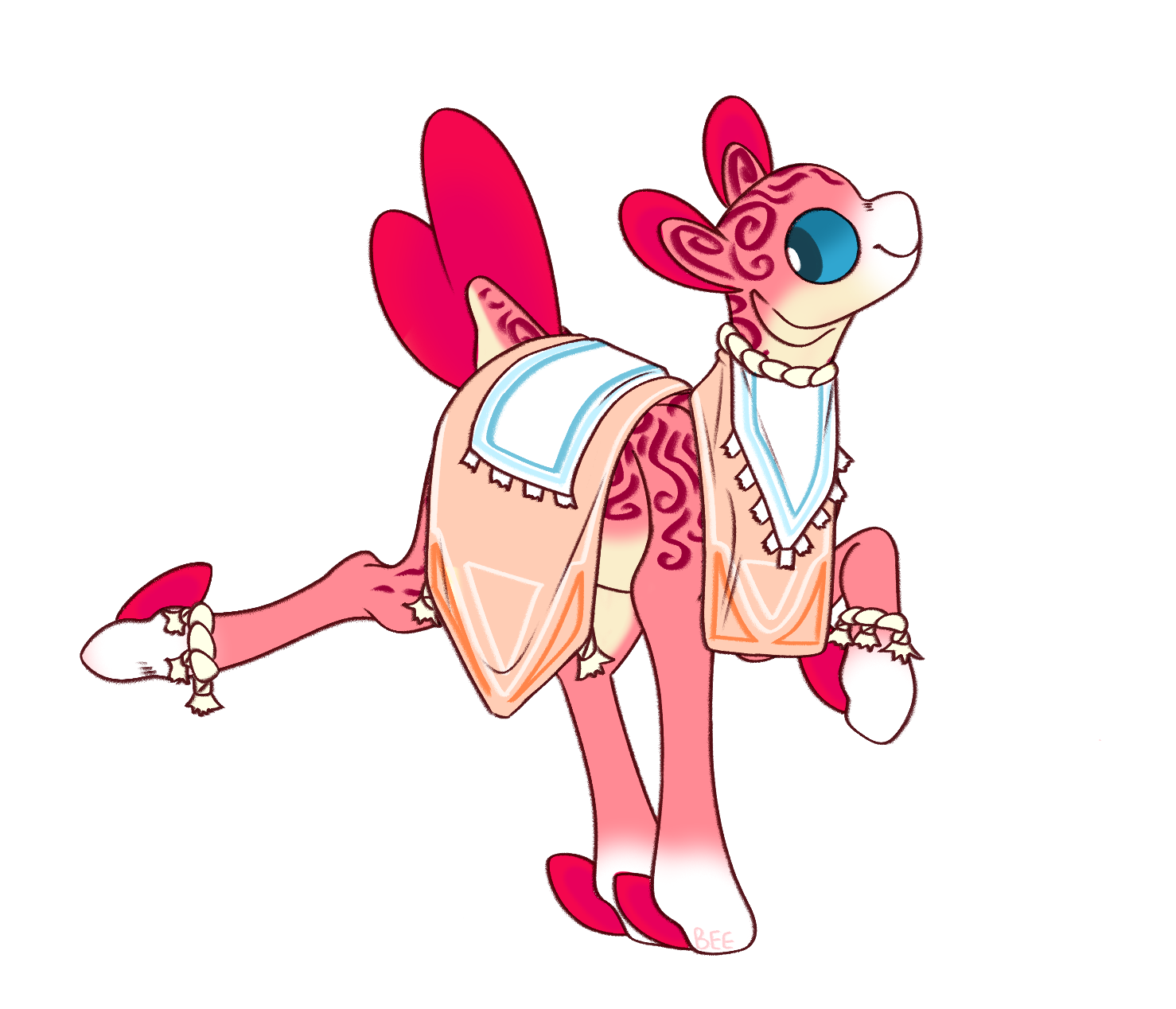
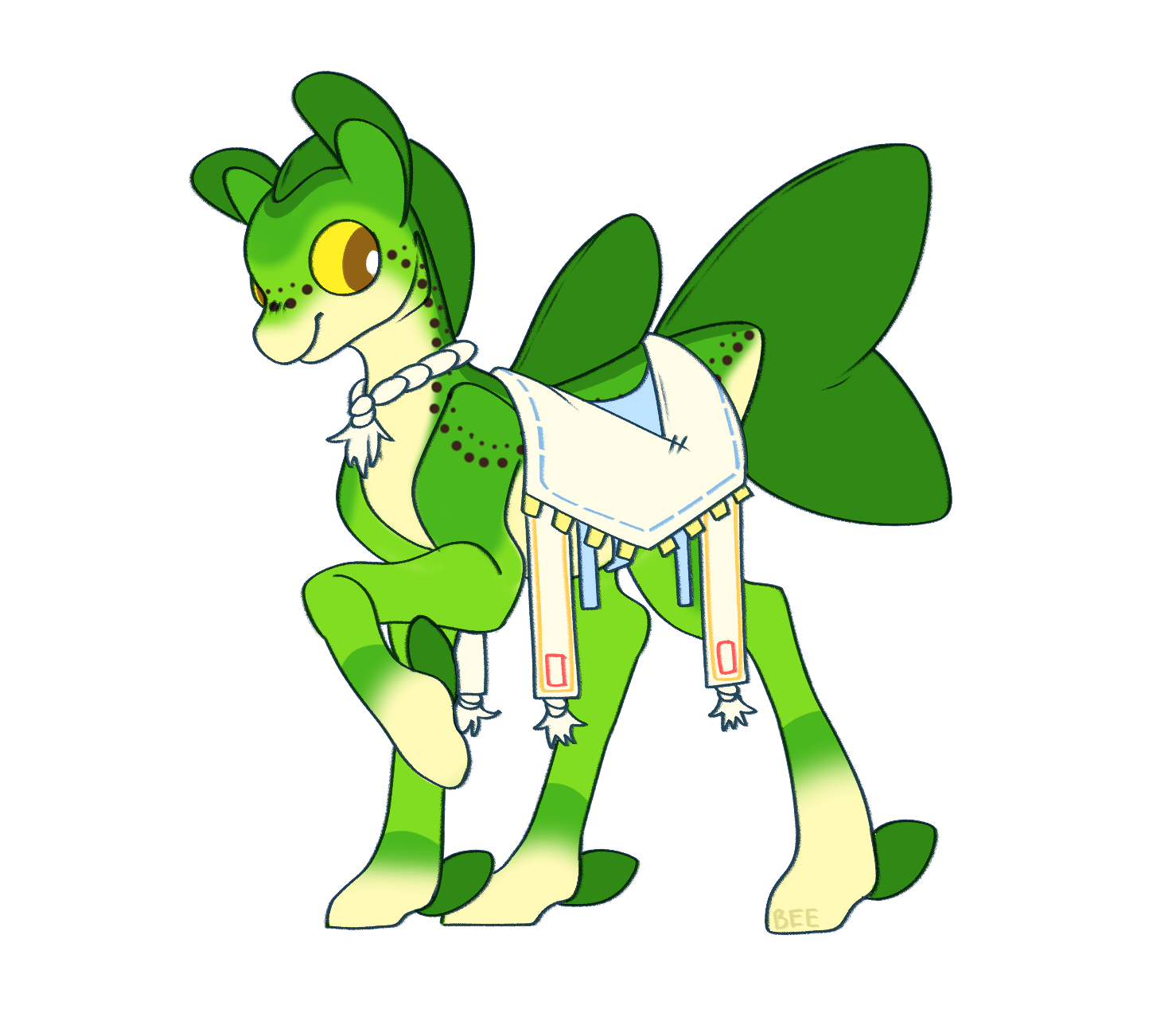
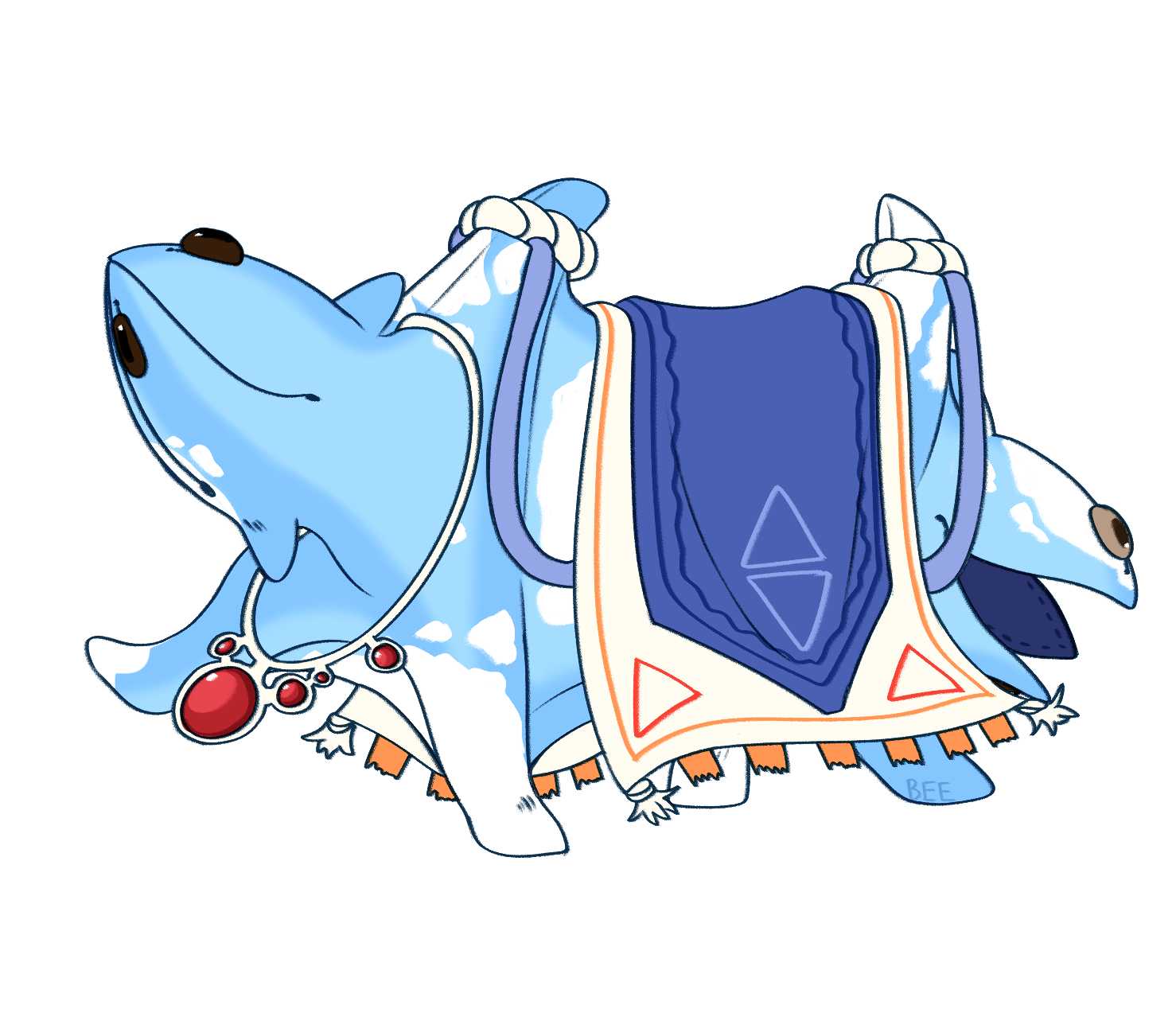
Art by SeveralBeees
Phonies and palindromes have their own languages. They don't have many hard consonants but use vowels and soft ones. So... a, e, i, o, u, m, l, w are common sounds they use. They can close their lips at the front of the mouth and they can enclose all of their tongues at the back of their mouth too. It's like having lips at the base of your throat, too...
The most common language was originated by grassland palindromes and is now widespread. It uses a sort of a reverse abugida which uses lines to represent vowels...

And small symbols that can be tacked onto those lines for consonants.

These symbols can be combined to create more complex sounds.

Phonies and palindromes also have unique forms of address to one another. Because most individuals migrate often, many cultures share elements of language with one another, and one of these elements are namewords, which function somewhere between a name and a pronoun. Based on the color patches inside an individual's mouth, a bunch of notes are gathered which the individual can arrange in any way they'd like to construct their form of address. Different cultures use different tones for the different patches, but what they all share is a note for a green patch (male gonads), a note for a red patch (female gonads) and a note for an absent patch (no gonads).
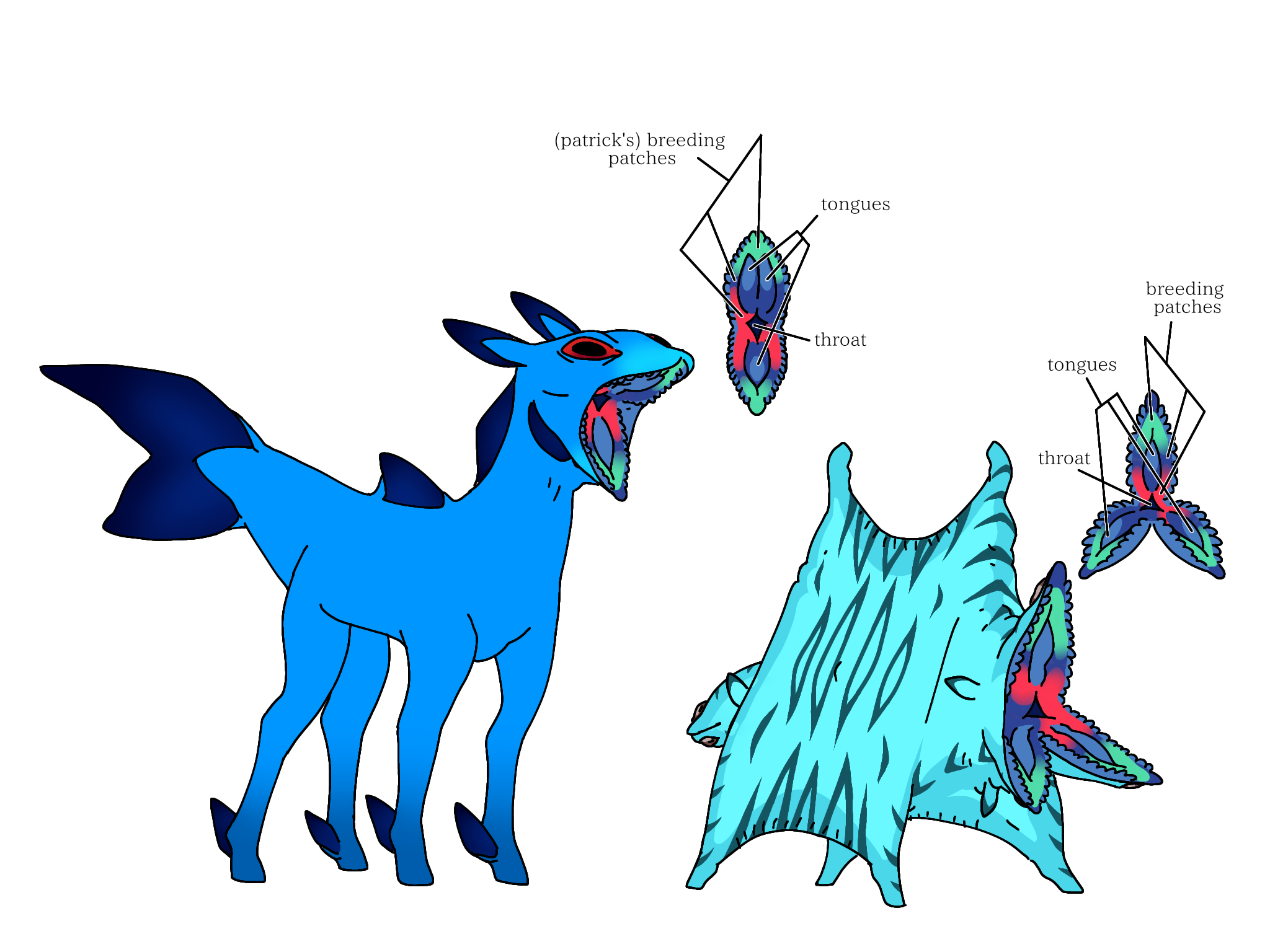
Although they're dependent on sex, phonies and palindromes don't have much of a concept of social gender and these pronouns are more like "this guy has a lot of green in their mouth with a bit of red, meanwhile this guy has a couple of red spots and only one green one" to differentiate between individuals. Of course, you can name your confibulan whatever you'd like despite this. Insert more lines about their actual language that I don't feel like writing out just yet.